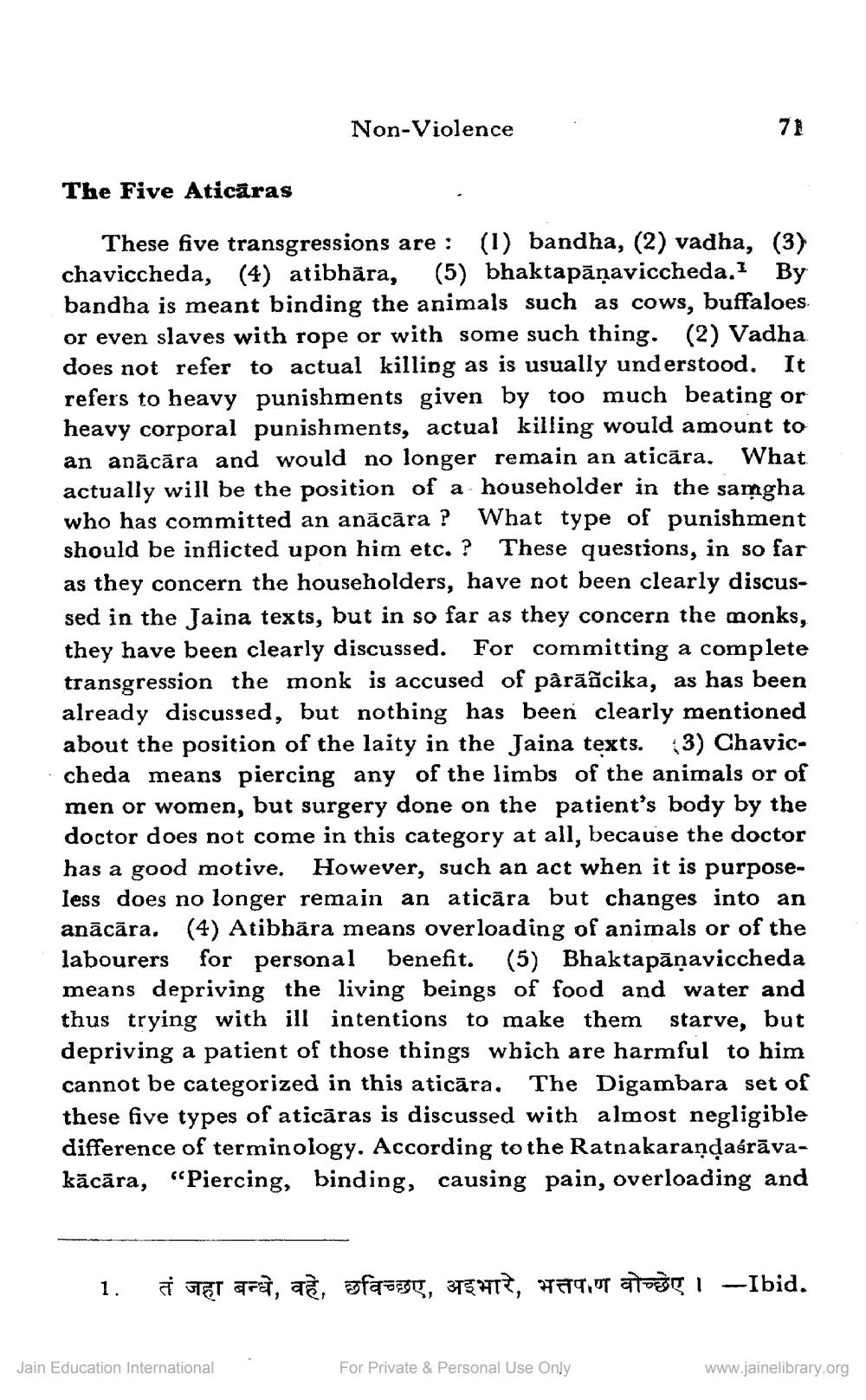________________
Non-Violence
71
The Five Aticaras
These five transgressions are: (1) bandha, (2) vadha, (3) chaviccheda, (4) atibhāra, (5) bhaktapāņaviccheda. By bandha is meant binding the animals such as cows, buffaloes. or even slaves with rope or with some such thing. (2) Vadha does not refer to actual killing as is usually understood. It refers to heavy punishments given by too much beating or heavy corporal punishments, actual killing would amount to an anācāra and would no longer remain an aticāra. What actually will be the position of a householder in the samgha who has committed an anācāra ? What type of punishment should be inflicted upon him etc.? These questions, in so far as they concern the householders, have not been clearly discussed in the Jaina texts, but in so far as they concern the monks, they have been clearly discussed. For committing a complete transgression the monk is accused of pārāñcika, as has been already discussed, but nothing has been clearly mentioned about the position of the laity in the Jaina texts. 3) Chavice cheda means piercing any of the limbs of the animals or of men or women, but surgery done on the patient's body by the doctor does not come in this category at all, because the doctor has a good motive. However, such an act when it is purposeless does no longer remain an aticāra but changes into an anācāra. (4) Atibhāra means overloading of animals or of the labourers for personal benefit. (5) Bhaktapāņaviccheda means depriving the living beings of food and water and thus trying with ill intentions to make them starve, but depriving a patient of those things which are harmful to him cannot be categorized in this aticāra. The Digambara set of these five types of aticāras is discussed with almost negligible difference of terminology. According to the Ratnakarandasrāvakācāra, “Piercing, binding, causing pain, overloading and
1.
Jet Fa, dē, gay, 375HT?, at,ur ato
I -Ibid.
Jain Education International
For Private & Personal Use Only
www.jainelibrary.org




